
The hidden world of Irene Handl
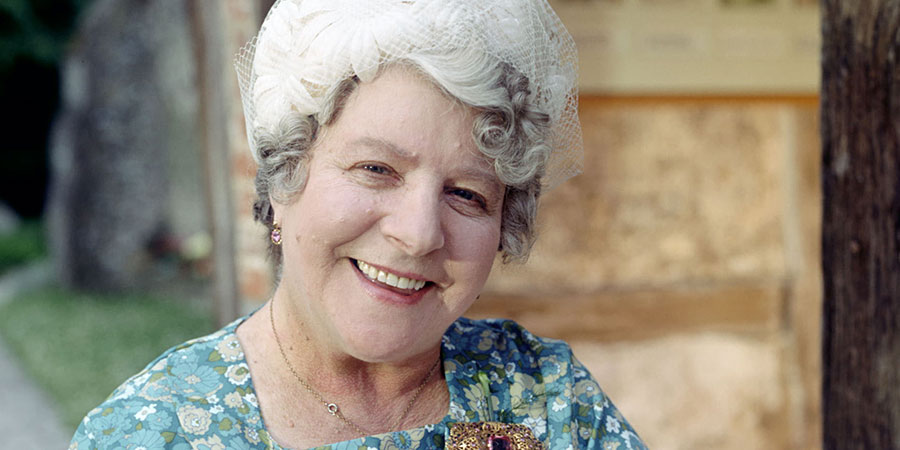
According to Noel Coward it was 'extraordinarily original' with an 'authentic touch of genius'; Daphne du Maurier considered it 'compulsive' and 'superbly amoral'; Doris Lessing said it was 'so good and original'; David Storey saluted its 'crazy veracity'; Margaret Drabble judged it 'oddly haunting'; and Fay Weldon found it 'a magical mystery tour of the mind'. They were all talking about the work of Irene Handl - but they were not referring to any aspects from her well-known career as a comic performer. What they were actually alluding to was her far more obscure output as a novelist.
If this seems surprising, then quite a few other things about the life of Irene Handl will seem surprising, too, such as the fact that the woman who was famous for playing world-weary working-class Londoners actually hailed from an exotic and affluent European family (with an Austrian banker for a father and a French aristocrat for a mother); she was an obsessive fan of the early, 'pre-Parkerised,' Elvis Presley (and sometime-president of the Lewisham branch of his fan club), as well as a passionate lover of rock 'n' roll in general ('because of the beat,' she said earnestly, 'I'm mad about the beat') and an admirer of, among later figures, Lennon and Jagger; she was a fellow of the National Geographical Society, and one of Britain's most avid champions of Chihuahuas (and was inseparable from the pair that she owned, Quetzal-Coatl and Beulah); she also admitted to having a 'violent dislike' of people who took money too seriously, and vowed to mock them 'nastily' whenever she could. Indeed, behind the carapace of ordinariness that she depicted so artfully on the screen was one of the most unusual, interesting, intelligent and memorable women in the history of British comedy.
Her significance as a character actor requires little elucidation. During a career that spanned more than half a century, she was a ubiquitously mischievous comic presence, not only funny in her own right with an impeccable sense of timing, but also as a reliably crafty and clever foil (''Ere, what's your game?') for such male stars as Peter Sellers, Terry-Thomas and Tony Hancock. Whatever stereotype she was handed - nosy landlady, outspoken servant, eccentric loner, deluded social climber or dotty and/or downtrodden wife - she rescued with enough realism, wiliness and wit to make them seem like believable and memorable individuals.
Her women, although usually distracted by the urgent need to make ends meet, were often far more sharp, strong and sensible than the dreamy, devious and irresponsible men whom they had to endure. It is hard not to sympathise, for example, with the chronically harassed Mrs Cravat as she struggles to make sense of her fool of a tenant, the would-be sculptor played by Tony Hancock, in The Rebel: 'I did that from memory,' he says proudly of the grotesque lump of stone stuck in the middle of his bedsit. 'That is: "Women as I See Them"'. 'Oh, you poor man,' she exclaims. 'Fancy knockin' around with women like that! I wonder what your kids'll look like!'
It is much the same when she plays the long-suffering wife of the driven but hopelessly deluded trade union shop steward Fred Kite, played by Peter Sellers, in I'm All Right, Jack. 'There's two who can play at this game, you know,' she snaps as she reacts to his latest shambolic attempt at industrial unrest by announcing that she's getting her bags packed. 'You wanted a strike? You've got one! Perhaps when you feel like going back to work, I will!'
There was always something bright, something bold, something beguiling about an Irene Handl performance. She did not just make her own mark in comedy. She also paved the way for successive generations of other talented and funny women, from Miriam Margolyes to Phoebe Waller-Bridge and beyond. She is thus still worth watching, and applauding, for all that she brought to the screen.
She is also, however, well worth reading, because, even though they are now collector's items, her two novels are remarkable both as individual stories and also as insights into their remarkable, multi-faceted, author. They suggest a talent, and intelligence, that, in more enlightened times, would surely have led to many more creative and diverse achievements, as well as proper recognition and awards.
Her first literary adventure was, in a way, a glorious afterthought. It was in 1921, when she was just nineteen years old, spending some idle time in Paris, that she first started sketching out a story. Once she was back at work in England, other ambitions took over, and she left her literary ideas behind, and it would not be until the early Sixties that they crept back into her mind.
She was in the middle of a long-running West End play, portraying the eponymous heroine of Arthur Lovegrove's Good Night Mrs Puffin, when she fell ill. The production, which had started in 1961 and would last for two years and 800 performances, was an exhausting starring vehicle for Handl, and, midway through, she was forced to miss a number of appearances because of exhaustion. 'I felt I had got what I thought was Dutch Elm disease,' she would joke, but the reality was that she was in desperate need of a rest.
Recuperating at her home in Kensington, she suddenly decided, on a whim, to root out the old attaché case in which she had stored the notes that she had sketched out in Paris, and, when she read them again, she resolved to resume writing. There were only four densely-scribbled pages; after some reflection, she tore up two of them, kept the other two, and began adding more. Forty years on, she was finally ready to finish her novel.
It started out mainly as therapy, but, once she was back acting on the stage, she found that she could not stop writing when she was off it. She continued in her dressing room and at home, travelling on buses, taxis and trains, and in cafés and restaurants, scribbling away in longhand ('I had terrible cramps in my hand before I learned how to hold my pen in a relaxed way') while her hugely successful play rolled on and on in the West End.
The 'extra-curricular' work was liberating, drawing on the kind of qualities that her acting roles had seldom encouraged anywhere near to the fullest extent: her intelligence, her wit, her powers of observation and, perhaps most of all, her sensuousness. 'The strongest point about me is my senses,' she would later explain. 'Since a child I have savoured and appreciated the essence of everything from a boiled egg to a masterpiece'. It was thus evident early on that her prose was going to be remarkable for the way that it engaged the eyes and the ears and the nose and the tongue and the fingertips, evincing an unusually vivid and visceral reaction in the reader.
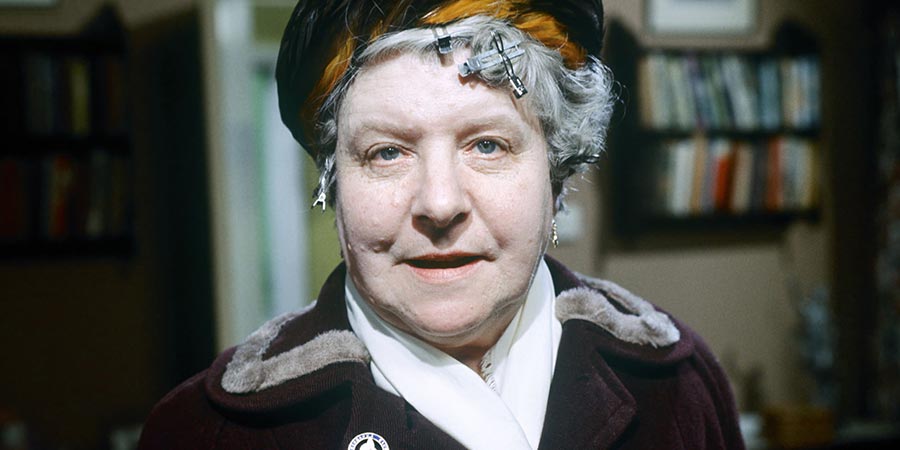
Handl certainly wanted to produce something special. Striving for the highest of standards, she was her own strict (and extraordinarily demanding) editor, forcing herself to write no fewer than five versions of each page before picking the best one to polish and preserve. Utterly absorbed by the whole process, she set herself no time limits, and was content to move ahead slowly and carefully, working long into each lonely night ('But it was rather nice,' she later said, 'to think that I was the only light left on in the road').
The writing thus went on when her play eventually left the West End first for a provincial tour of Britain and then for an extended run overseas. It was still the same obsessive routine: endless re-writes backstage and on her way to and from each new theatre and hotel. By now, even her closest friends and colleagues had learned to leave her alone, seeing how consumed she was by her new craft.
She finally completed the story early on in 1964, after the play had at last come to a close, during her long flight back to England from Australia. Her right arm, soon after she landed, had to be placed in plaster - the result of straining the tendons so much as she wrote - but she believed completely in what she had achieved.
It was, sure enough, snapped up by the first publisher - Longmans - who saw it. 'Nothing was altered,' an understandably proud Handl would say, 'and it was the most wonderful feeling I have ever had, more than any part I have done. I was so happy I lost my hat in a taxi, and I am very devoted to hats'.
Now called The Sioux, the novel turned out to be the kind of camply gothic comic melodrama that, many years later, would surely have mesmerised the likes of Wes Anderson, Noah Baumbach and Tim Burton. Like its author, it was richly European in character, full of historical and cultural allusions and contradictions, cruel but honest ironies and deep-rooted classes and cliques.
The 'Sioux' in question, rather than having anything to do with Native Americans, is a now-sprawling but still fiercely tribalistic French aristocratic family by the name of the Benoirs. They are wealthy, spoilt, inbred and amoral, and live 'in a perpetual state of je m'en-fousism [...] under the impression that they are still living in pre-secession and are happy to spend the rest of their lives up to the eyebrows in Spanish moss'.
Their world is a rich but rotting world. The cloyingly sweet scent of privilege still lingers in the air, but the sour stench of death and decline soon drifts up the nostrils and slips down to sting the throat. Ladling private neologisms over their conversations like sauce over decaying meat, they talk in order not to think, have sex in order not to love, and float on like ghosts through the glorified mausoleum that they still think of as their home. Even the apparent hardiness of their horticulture is being undermined by the harshness of modern elements, with some of the once-thriving flower displays now 'candied with a coating of flies'. This profoundly solipsistic family are far too immersed in their own sense of entitlement to notice any of the warning signs, but, slowly but surely, their power is peeling away.
The patriarch of the Benoirs is Armand, who resides in an opulent old mansion on the outskirts of Paris. A 'small Adonis' nicknamed 'le sexuel excédé' by his many appreciative lovers, he is well-meaning but weak-willed, driven more by his loins than his laws, always ready to help so long as it does not interfere with his restless quest to see and sample 'anything new' ('She has had her pubic hair dyed to match the hair on her head,' he gasps excitedly about one of his mistresses. 'I find that fantastic').
He has a sister named Marguerite ('Mimi' for short), a sybaritic beauty who is now based in New Orleans but has recently been honeymooning her way around the world in the company of her third husband, the droll, kind and refreshingly even-tempered British banker Vincent Castleton (who is already daydreaming about divorce). She is cruel, coquettish, impetuous and imperious, with 'the gift of making French sound the rudest language on earth'. Warm and passionate one minute, ice-cold and callous the next, no one around her ever quite knows for sure, as they come close to her, if they will be on the receiving end of a kiss or a kick.
Mimi's ailing young son, the little nine-year-old sailor-suited Georges-Marie (whose many alternate soubriquets include 'Moumou,' 'The Dauphin,' 'Puss,' 'Little Rubbish,' 'Little Ducky,' 'Your Flirt,' 'The Wizard,' 'Woozy,' 'King Nutty,' 'His Nibs' or 'Mim's chap'), arrives slightly late into the tale, having been left behind for treatment in the family's own private clinic in Paris, where he subsisted on nothing but champagne, oysters, cognac and biscottes. This weird 'waxen-lidded bigot' with eyes 'like black fried eggs,' an 'ardent nutcase' as 'spooky as hell and deliciously ready for the mortician,' is seriously anaemic, highly nervous, very volatile, mulishly stubborn but disarmingly guileless and often quite charming; he collects rosaries and fading photographs, cries copiously at will, and has a tendency to bite people for no particular reason. In his most melancholic moments, it is said that he 'simply stands there with his mouth open wide emitting desolate shrieks'.
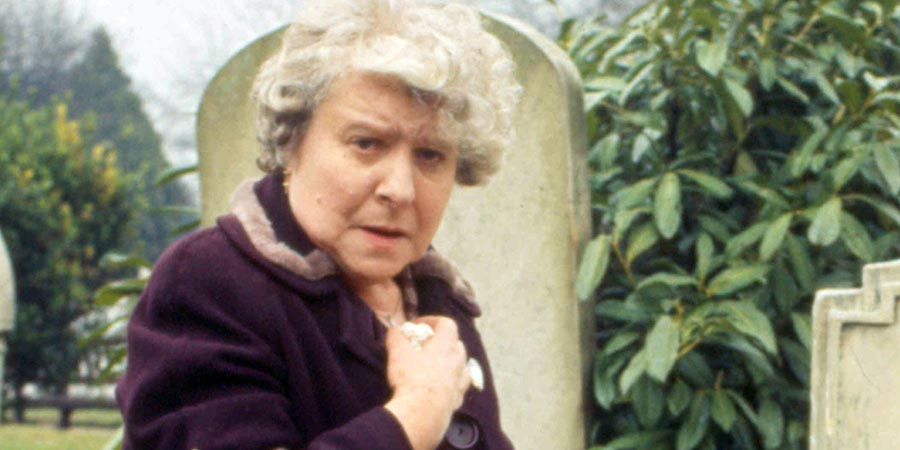
Among the other peculiar characters attached to the 'general bashi bazoukerie' of the clan is Armand's tragically trusting and semi-deaf wife and cousin Marie; his latest 'vivid little cockbird of a lover,' the spectacularly superficial Liane de Chassevent (who is aching to show the world her 'splendid new bosom'); and his spoilt and supercilious young son Bienville (whose forthcoming marriage of convenience is a keenly-anticipated social event).
There is also Castleton's somewhat sinister personal assistant, the Cockney F.E. Bone (a sort of Edgar Wallace version of Jeeves - a closeted homosexual and a bigamist to boot - who is furtively fascinated by the wealth and power all around him); as well as a scattering of embittered family servants, most of them with their roots in the slave trade that the Benoirs once avidly embraced ('All the Benoirs are sorcerers,' one of the maids thinks to herself with a shudder. 'Even the little boy has those terrible eyes'). There is even a suitably self-important pug-faced, jewel-collared monkey, Ouistiti, who sits next to Armand on a special cushion at the dinner table, a napkin tied around his neck, stealing food, guzzling champagne, masturbating on many unwelcome occasions and baring his teeth at most of those he meets.
The story, as it commutes between Paris and Auteuil and the Deep Delta, is beguilingly promissory. There might be a marriage, a divorce, a birth and/or a death; the family might get even closer, or else fall completely apart. There is a whipping, an incident of incest, some alarming cases of quackery, various acts of internecine emotional conflict, and numerous hints and allegations of corruption and careless infidelity. There are also moments of tenderness, compassion, humour and heart-felt regret.
It is all told in the present tense, so the prose works like Hitchcock's camera, nudging you on into the unknown, forever unsure if you are about to encounter the banal or the bizarre. The dialogue is expressed in an often-wanton English splattered with soupçons of French and a few crumbs of Creole, 'Ol' Kintuck' and vintage 'Miss'ippa'.
There are a number of isolated but elegantly evocative passages of prose, such as the one relating to the recently estranged-Castleton's reluctant return to the milieu of The Sioux ('the plumey gloomy glade') in search of his own 'bit of bright jam': 'He drives the Bentley into the courtyard of his dear old Southern home, where all the brilliant flowers have been freshly sprayed for the night, the callas and the cannas and the belles de nuit, and the begonias and the bignonias and the Cherokee roses, and where the fountain is splashing away like fun among the palmetto fans'.
There are also some memorably wild, lyrical and rhythmic riffs, such as the one that focuses on a bloated and sweating George-Marie staggering off to bed after surviving the challenge of a typically long, elaborate and acid-inducing Benoir dinner: 'He is replete with Iced Melon, Homard Thermidor, Happiness, Kisses, Cailles en Chemise, Champagne, Love, Filial Piety, Champagne, Colibris and Humming Birds, More Champagne, a little Brother, Ouistiti, Salade à l'Orange, Pommes Duchesse, Viv's Wedding, Asperges, Sauce Mousseline, Shyness, Father Kelly, Putting Oneself Last, Fraises à la Crême, two tiny Petits Fours shaped like paniers des roses, More Champagne, a taste of maman's Crêpes Suzette, Obedience, Nice Fruits from everybody, and an oyster direct from the Brochette d'huîtres served as a special attention to Mr Castleton who is the favourite of them all and don't eat desserts much'.
For most of the time, however, the action is predominantly driven by dialogue, almost screenplay-like in the economy of its exposition, and often delivered via the kind of multi-culturally-soaked woozy exchanges and interior monologues (e.g.: 'P'tit m'sieu gettin' to look more like Madame votre mre ever' day') that mimic the overly-rich meals that continue to fuel and sometimes fatigue these strange and complex figures.
As a reading experience, it is akin to drifting along inside a sultry summer dream, tossing and turning as the atmosphere keeps alternating between welcome warmth and muggy discomfort. As a fantasy ride on les cochons hygiéniques (to borrow a phrase from Handl herself), this strange, smart, satirical journey is something from which you may well awake in a slightly clammy sweat, but with plenty of vivid visions still lurking inside your head that you will be unable to resist revisiting.
Published in September 1965, The Sioux - while initially bemusing those who were distracted by the author's typical on-screen image - was widely praised critically, was confirmed as a best-seller by Christmas, and had not only been bought by an American publisher but had also been optioned by Paramount as a potential Hollywood movie. Irene Handl's new career as a novelist thus seemed ready to soar.
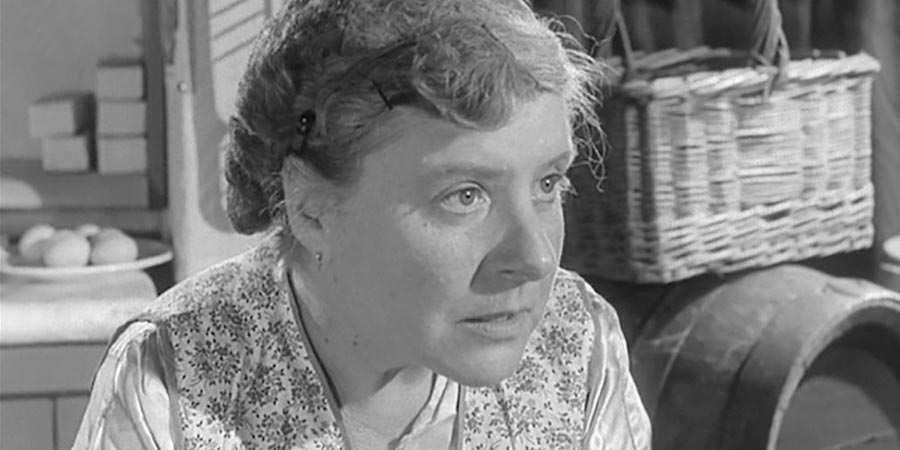
What followed, however, was silence. For the rest of the decade, no new publishing plans were announced, and nothing else would be written.
It was a strange stalling of such a promising literary enterprise, seeing as The Sioux had not only aroused so much interest in Handl as a writer, but had also seemed so obviously set up for a sequel. Indeed, as absorbing as the story had been on the page, the fact was that, once one emerged from it as if from a daze, one realised that very little in terms of real action had actually happened. Peripheral characters, seemingly primed for key plotlines, had been left stranded, and none of the central themes and conflicts had really been resolved.
It seems, however, that the sixty-three-year-old Handl was simply too busy acting to start work on any other book, let alone a carefully-cultivated sequel. There was a new sitcom (Barney Is My Darling) to star in, another movie (The Wrong Box) to make, and more plays to pursue. She did express a wish to write her own television series, in which she would play 'an aristocratic old lady who is quite unaware of other people's problems, but quite a nice old lady really,' but, thanks mainly to the dense sexism of the time, no broadcaster was willing to give her the chance.
It would not be until the early seventies, after she had completed co-starring in the popular ITV sitcom For The Love Of Ada (which ran for four series between 1970 and 1971), that Handl would finally find both the time and the inclination (as well as the self-belief) to resume her literary career.
The basic plan for a sequel to The Sioux had been, in her words, 'on the stocks' since late 1971, but her various other commitments meant that little was actually written for the first year or so beyond the odd tantalising fragment. The opportunity to sit down and work intensely on the project only came, once again, from the ironic consequences of the exhaustion caused by a starring role on the stage.
At the start of 1973, Handl (now aged seventy-two) collapsed during a performance at the Belgrade Theatre in Coventry in a play called Dead Easy. It was the result of overwork, and, although she quickly resumed her starring role in the production, the greater rest that she had been prescribed allowed her the time to pick up her pen and start writing again.
This time she wrote much more quickly and confidently, sure of her purpose as she plotted a kind of postscript to her previous story. Published later the same year, it would be a much shorter book - 192 pages to its predecessor's 352 - and much more driven in its drama.
Called The Gold Tip Pfitzer (which is, by the way, a type of cypress tree often seen as a symbol of mourning), the novel picks up, more or less, where The Sioux (which was re-published the same year with the new title of The Green And Purple Dream) left off. The action has shifted to Paris in the sweltering heat of high summer, three weeks on from the funeral of little George-Marie, the Dauphin, who has died from monocytic leukaemia, and the focus is on the impact his demise is having on his fast-fragmenting family.
The mood, inevitably, is decidedly more downbeat now, and the dialogue darker, with lines darting back and forth like flies buzzing about an abandoned Benoit banquet. Within the first few pages, a furious Armand has told Marguerite that she is 'a horrible mother' and a 'bad habit' who 'has crashed everyone's lives for them as usual,' shouting at her: 'For once in your life try to behave like a normal being!' She, in turn, has accused him of being a 'smug prig' who is nothing more than 'a doormat for everyone to wipe his filthy feet on'. Violently resentful of her own semi-repressed despair, she has also thrown wild punches at her husband, and pummelled her brother's chest with her fists.
These are bleak and fractious times, seen through a 'whole sinflood of tears'. Mimi and Castleton are getting divorced, the Dauphin's death having broken them. She hates him for the nagging visibility of his grief; he hates her for the alarming invisibility of her own. They hurl insults at one another before departing in their respective status symbol cars, the Benoir Rolls and the Castleton Bentley, and head off in different directions.
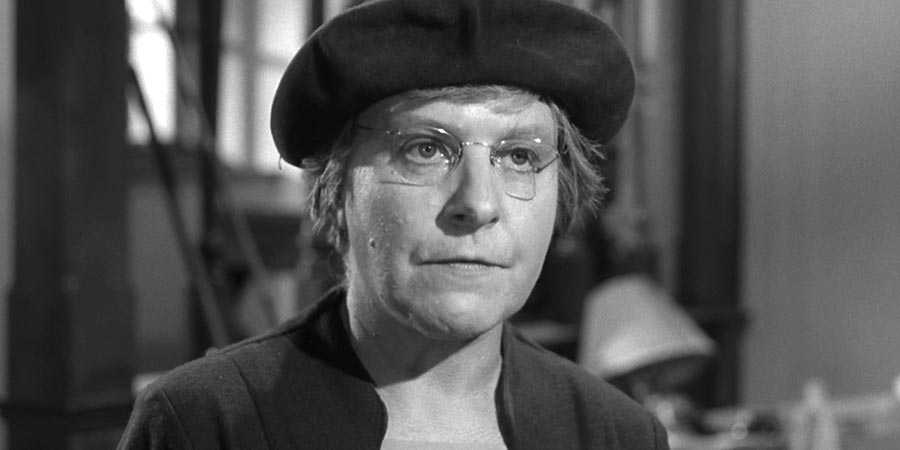
It is not just Castleton whom Mimi, anaesthetising herself with regular gulps of whisky, now seems to hate. She hates most people these days. Armand's wife, Marie, for example, is despised as a 'permanent invalid,' a 'half-wit' and a 'silly fool' who deserves to be 'beaten like a carpet'; she wishes on her 'degenerate' nephew, Bienville, 'the death of a mad dog'; and she also orders out her so-called 'rabble' of servants with her shrill insults still ringing in their ears.
Not even her dead son escapes her wrath: 'What things that tramp had forced her to do with his dying,' it is said that she thinks to herself. 'If she had him to hand now she would slap him till her palm tingled'. Not even her unborn baby can soften her hardened heart: she has already told her estranged husband that she has no intention of keeping the child and, unless she gives in to the temptation to abort it, she 'will pack it off to him with layette and nurse as soon as possible after the birth'.
Only Armand, at times, still arouses in her any real affection, and even then it is of a decidedly unhealthy kind. Considering him 'the dearest, most beautiful person on earth,' she frequently seeks to kiss him and, at their most creepily close moments, even shares a bed with him ('We try to get a little sleep together,' she protests to the disgusted Castleton. 'Is that so bad?').
Elsewhere in this menagerie of monsters, the usual machinations and mind games are taking place. The younger brother of Armand and Marguerite, Baudouin Benoir, 'a wreck of a man' known to his family as 'The Skeleton,' has arrived to provide dubious moral support, radiating hate and resentment as he whizzes around in his electric wheelchair; meanwhile, the dim and doll-like Marie is filling her otherwise empty days with a series of aimless fashion experiments ('Just now she's in the middle of a Kirschner phase and spends whole afternoons looking through swatches of charmeuse and triple ninon in all the thé danson colours of tango, azalea and flame'); and the still-closeted Bienville, Armand's shockingly feckless and resentful punk of son, expresses his typically half-hearted sense of familial rebellion by encouraging the rash actions of his 'idiot' English wife, who is busy decorating the kind of big and brash Drekpalast (all 'vulgaire, commun, ordinaire, de mauvais goût et banal') which is guaranteed to horrify Papa and all of his 'high-class shines'.
These conflicts and conceits all take place inside the same old claustrophobic bubble of bad faith. All that is solid may well now be melting into air, but the Benoirs babble on, and on, as they slip ever-deeper into oblivion.
The core of the story takes the form of an extended flashback. Armand and Marguerite summon all subordinate Benoirs to their country retreat at St Èze, 'the cradle of the wicked Sioux,' to attend the dying days of the Dauphin. It is a grim scenario, with a clutch of sinister surgeons crowding around the white-faced boy like crows hovering over carrion, while the now permanently-stoned child dreams of devils and demons and dead headless dogs, vomits 'raspberry ice,' starts to lose control over all of his customised languages, and marbles a pale pear with burgundy-red blood as he rolls it around in his mouth.
Predictably for such an insular and arrogant family, they often seem to be in denial about the truth of his condition, still believing that a Benoir is too grand a creature to face such a common fate, and so they leave the Dauphin to have 'miracles worked on him' and 'nostrums pumped into him'. Servants are sent out to collect the delicate maidenhair fern, from which is made 'a famous sirap de capillaire esteemed by the Sioux as a sovereign cure for "anaemias of every type" and for the "purification of the principal organs,"' and each brief increase in appetite or energy is greeted with a burst of forced gaiety and crazed self-congratulation.
Deep down, however, they do seem to know, or at least suspect, how doomed it all is. Numbing themselves with studied nonchalance, their days are informed increasingly by the convenient distraction of impetuous and irrational acts, such as flying in an unconventional specialist all the way from Australia, at great expense, only to send him straight back. 'What was the point,' asks an exasperated Castleton of his wife, who is clearly going more than slightly mad. 'No point at all, she replies blithely, before heading off to lunch.
The end is a signalled suddenly and specifically by one tiny bubble of blood that flutters from the Dauphin's nostril, filling up and flattening as he breathes, which finally bursts, and is then followed by many more, and then, in the most macabre of scenes, he dies while a panicking mass of family and physicians skate on a rink of mucus and blood, 'charging about like Keystone cops trying to force an arrest'. Then it is all over, and it is quiet, and Marguerite and her son are left in a tragic embrace, looking 'as if they'd murdered each other'.
The novel ends, like the last one, with the sense that the story is still not quite all over. Since the passing of the child, there has been a fight, a suicide, several arguments and multiple fussed-over moves and bitter-sweet relocations, but a few of the narrative threads remain swaying loosely in the late-summer breeze. Mimi is currently hopelessly numb and utterly indifferent to those around her ('Je m'en fous de ces gens'), although she is toying with the idea of flying off to be reunited with a more pliant old lover in South America; a shell-shocked Castleton is heading home to Britain, 'driving back to his people as one gets into a car after a car crash,' but there are hints that his strange addiction to the foreign tribe is not yet entirely through; and Armand, in spite of everything, is fighting on regardless, determined to save the Sioux.
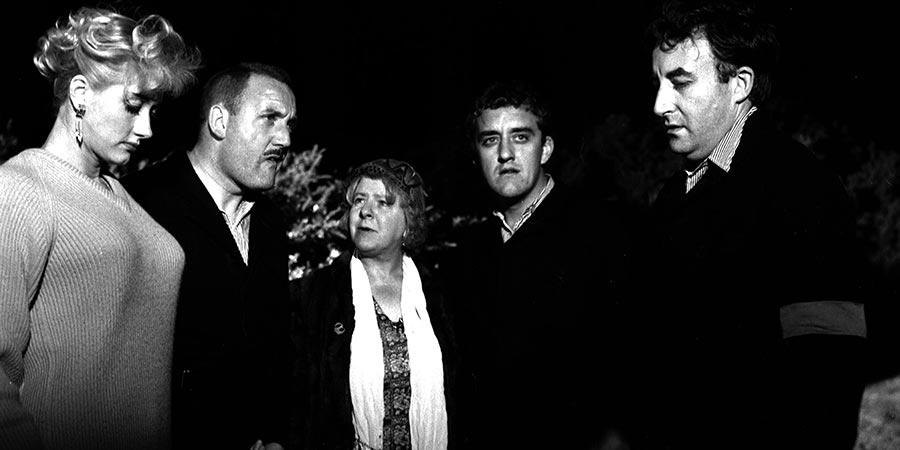
As a book, The Gold Tip Pfitzer is extraordinary: an alarming, amusing, sometimes uncomfortable and sometimes quite emotional literary experience. From page to page, there are a few touch-traces of significant influences, from the cold and dispassionate satirical wit of Evelyn Waugh to the warmer humour and compassion of Charles Dickens, but every line is stamped with the truly unique signature of Irene Handl herself.
Here, without any doubt, is a rare and confident stylist. So much more, the second time around, is conveyed between the lines, especially for those readers who are returning, but, even when taken as a stand-alone piece of prose, the variety of mood, the sensitivity of structure and the eloquence of expression are often astonishing. It does not matter how repulsive the characters might seem to be, the context that carries them is so peculiarly absorbing that the reader, like Castleton as he departs from the Sioux, is left at the end to reflect that the strange fascination will probably never be entirely sated.
What this meant in a commercial sense, however, was that The Gold Tip Pfitzer represented a challenging book to sell. It transcended conventional genres as well as confounded common expectations, and so it required more than the usual amount of imagination and effort to promote it.
An initial sign of the problems facing the fiction in a marketing sense had arrived when Handl's new publisher, Allen Lane, behaved in a strangely irrational way when deciding on what the book should actually look like. Handl's own front cover design (sketched boldly with Max Factor make-up, Biro and rouge), which featured a distant cross on a deserted hillside, was rejected on the grounds that it was 'too morbid' - only for it to be replaced by a far more morbid design, which made the entire cover appear like a dark and grimly marmoreal gravestone. 'It's a good job I'm not superstitious,' joked a somewhat bemused Handl. 'It's got my name on it!'
Another problem was that, given the eight year gap between the episodes, the second novel was fairly reliant on reviewers making the relevant links to the previous instalment, and not all of them seemed able to do so. Although the reaction, once again, was generally very positive, with plenty of plaudits for Handl's originality, the flavour and freshness of her prose and the wittiness of her reflections, there was also, in some more conservative quarters, a sense of confusion as to the nature of the unorthodox style and structure of the work. 'Odd people, odd ways of talking, odd happenings,' exclaimed a bewildered-sounding critic for The Stage, before summing the whole thing up as a 'strange novel,' while in the US a similarly bemused reviewer for Publishers Weekly conceded that it was 'compulsively readable' but added that 'it's too unpleasant to be much fun'.
These kinds of reservations, however, were very much in the minority, and elsewhere the achievement was appreciated. There were, for example, numerous accolades from her fellow actors, who knew just how intelligent and talented she was, and Peter Sellers, in particular, was a keen promoter of the book, saying that it was 'funny and frightening at the same time'.
The literary critics were also, in general, fulsome in their praise for a work that was deemed by one to be so original 'it's like coming across a new species of animal'. The Times reviewer was probably most representative of the mood when he called the story 'a daydream of wealth and power, but few daydreams are so fully realised, nor presented with such astringency and vitality'.
'I don't know yet if I have any real talent for writing,' Handl told reporters at the time with typical self-deprecation, and then added that she had no imminent plans for any more novels. 'Perhaps,' she reflected, 'I'm just an old lady with enough experience to write two stories'.
Irene Handl was so much more than that. A superb comic actor, yes, indubitably, but also a bright, imaginative, witty and strikingly original writer, and a woman who deserved so much more than the mores of the time allowed.
When she died in 1987, aged eighty-five, she was beginning to sketch out ideas again with a view to writing a third novel. The time ran out, but what she left behind, in terms of literature, deserves to be preserved and appreciated so much better than, so far, has been the case.
So if you ever happen to come across a dusty old second-hand copy of either or both of her brilliant books, do bring them home, enjoy them, take care of them, and do your best to spread the word about the special woman who wrote them: Irene Handl - author.
Help us publish more great content by becoming a BCG Supporter. You'll be backing our mission to champion, celebrate and promote British comedy in all its forms: past, present and future.
We understand times are tough, but if you believe in the power of laughter we'd be honoured to have you join us. Advertising doesn't cover our costs, so every single donation matters and is put to good use. Thank you.
Love comedy? Find out moreIrene Handl - The Sioux

Comic novel portraying the wealthy, arrogant, and wildly eccentric Benoir family, French aristocrats of Paris and New Orleans, and their outrageous, hilarious, and extravagant pursuits.
First published: Thursday 10th April 1986
- Pages: 352
- Catalogue: 9780006541486
![]() Buy and sell old and new items
Buy and sell old and new items
Search for this product on eBay
BCG may earn commission on sales generated through the links above.
Irene Handl - The Gold Tip Pfitzer

Continuing the story - started in The Sioux - of a wealthy and eccentric French family, the Benoirs, including Mim, who, at twenty-seven, is in search of a fourth husband; George, her charming ten-year-old son; and Armand, her unusual brother.
First published: Thursday 11th June 1987
- Pages: 192
- Catalogue: 9780006541493
![]() Buy and sell old and new items
Buy and sell old and new items
Search for this product on eBay
BCG may earn commission on sales generated through the links above.

